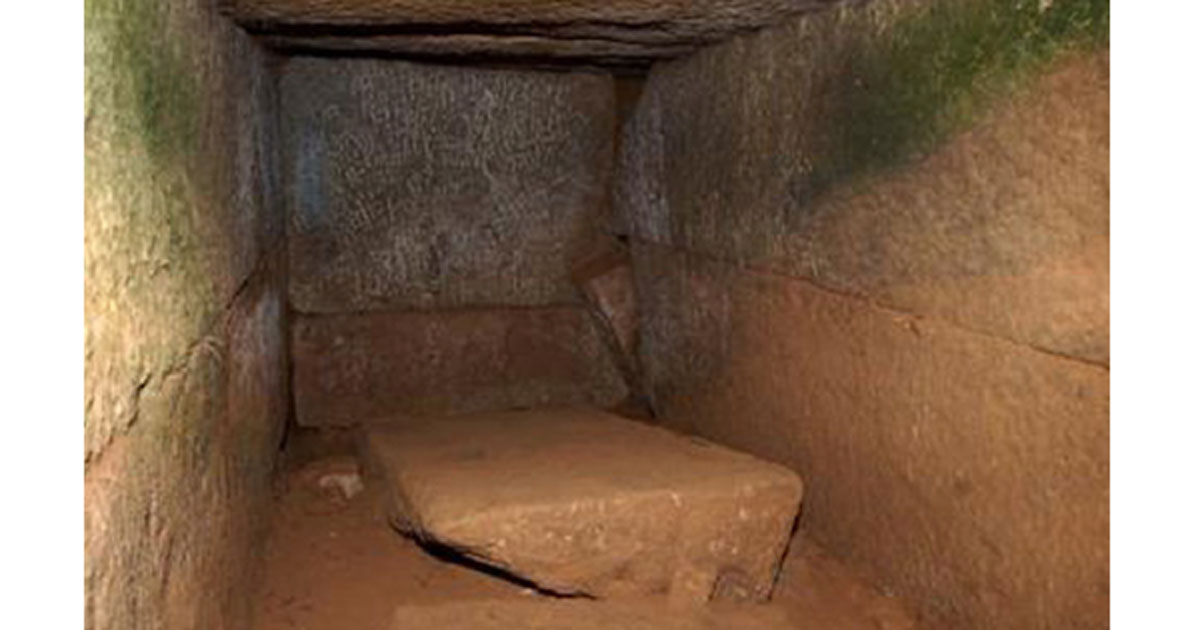North Korean Regime Reveals Discovery of Ancient Royal Tomb in Rare International Announcement
The Democratic People's Republic of Korea claims that they have found an ancient royal tomb deep underground in a recluse state. The regime released a rare, English-language statement announcing that local archaeologists discovered the royal burial site of the Goguryeo Dynasty (918-1392) in its border city of Kaesong.
The Discovery of the Royal Burial Site
According to the Korean Central News Agency (KCNA), the mausoleum of Suk Jong (1054 – 1105 AD), the fifteenth king of Goguryeo (Goryeo), a Korean kingdom located in the northern and central parts of the Korean Peninsula, was unearthed recently in Sonjok-ri of Kaesong, the ancient capital of the dynasty as Yonhap News reports. The English-language statement mentioned:
“A research group of the Korean National Heritage Preservation Agency, together with researchers of the Global Environmental Information Institute of the State Academy of Sciences, analyzed the space distribution features about the places in which mausoleums of the kings of Goguryeo might exist and succeeded in finding out the exact location of Suk Jong's mausoleum. In union with researchers of the National Heritage Preservation Office in Kaesong City and Goguryeo Museum, they conducted excavation in Sonjok-ri for over 20 days from last May to June to find out his mausoleum.”
Suk Jong was the third child of Mun Jong and reigned for a decade from 1096 to 1105. He oversaw various internal innovations, including the distribution of the country's first brass coins (in 1102) and the construction of the new Southern Capital.
The Ancient Complex of Goguryeo Tombs in North Korea
Despite the strict regime in the country, this is not the first time a discovery of significant archaeological value has taken place there. As previously reported in another Ancient Origins article, the Complex of Goguryeo Tombs, also known as Koguryo tombs, is an impressive ancient site, which became the first UNESCO World Heritage Site to be listed in North Korea when it was inscribed in July 2004. The complex consists of several group and individual tombs, dating to the later period of the Goguryeo Kingdom, and are the most well-known cultural heritage remains of the Kingdom. Many of the Goguryeo tombs contain beautiful wall paintings, which offer us a glimpse into the lives of the people living in the ancient Goguryeo Kingdom.

Goguryeo tombs in North Korea (Caitriana Nicholson / Flickr)
The Goguryeo Kingdom was one of the Three Kingdoms of Korea, and existed between the 3 rd century BC and the 7 th century AD. At its height of power in the 5 th century AD, its territory included northeast China and the northern half of the Korean peninsula. The Goguryeo Tombs are located in the cities of Pyongyang and Nampho.
The tombs are built of stone and covered by earthen mounds or more stone. Many of the Goguryeo tombs in the World Heritage Site contain beautiful wall paintings, most of which are produced with Chinese ink and pigments painted onto the plastered interior walls of the burial chambers. The paintings cover a wide range of subjects, which include portraits of the tomb owner, activities of everyday life, mythical beings and supernatural creatures, as well as decorative designs, such as the lotus flower. Thus, these images allow some understanding of this people’s daily life, aesthetic appreciation, and even religious beliefs.

A replica of a mural of one of the directional dieties found in a Goguryeo Tomb at the National Museum of Korea. (CC by SA 2.0)
The portraits of the tomb owners bring to life the faces of many of the ancient inhabitants of the Goguryeo Kingdom. For instance, in the Anak Tomb No. 3, there is a portrait of its owner, Dong Shou, who was the last ruler of the Daifang Commandery of Han China. In the painting, Dong Shou is depicted as wearing Chinese costume and sitting upon a throne of state under a canopy, where he attends to the reports of his subordinate officials. Despite the presence of Dong Shou’s name, biography, and dates, there are alternative theories regarding the actual owner of the tomb, which are still being argued even today.
Not Many Details Revealed for the Newest Discovery
As it was expected, the strict regime of North Korea hasn’t revealed very few details about the new find. The KCNA, however, revealed that the size of the mausoleum, located in the middle of what could be described as a low slope area on a mountain, is about 29 meters long north-south by 13 meters wide west-east, as Yonhap News reports, pointing out that the tomb has three sections, which are divided by four west-east embankments. "The Archaeology Society of DPRK (Democratic People's Republic of Korea) ascertained that the heritage was the mausoleum of Suk Jong. It is of great significance in making clear the developed culture of Goryeo," the KCNA stated.

This photo released by the Korean Central News Agency on Aug. 19, 2017, shows the mausoleum of Goguryeo King Suk Jong discovered in North Korea's Kaesong.
Top image: This photo released by the Korean Central News Agency on Aug. 19, 2017, shows the mausoleum of Goguryeo King Suk Jong discovered in North Korea's Kaesong



















